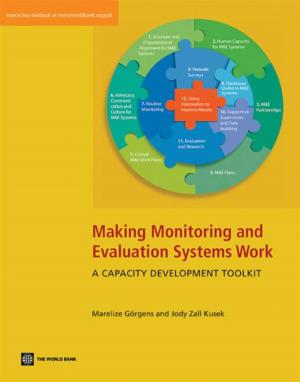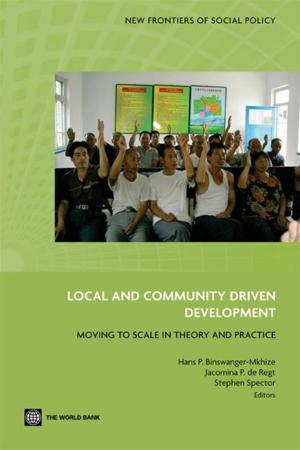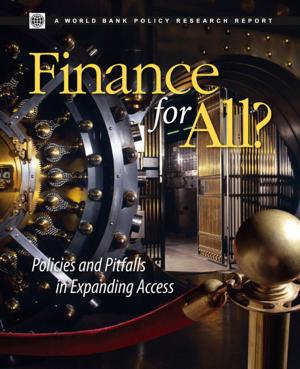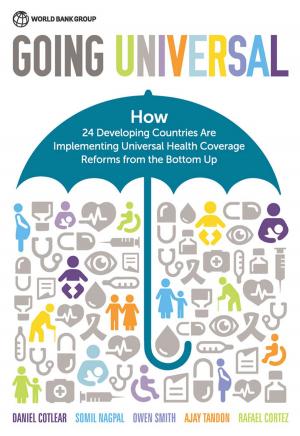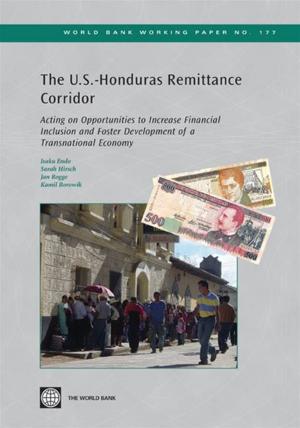Gender Dimensions Of Investment Climate Reform: A Guide For Policy Makers And Practitioners
Nonfiction, Social & Cultural Studies, Social Science, Gender Studies| Author: | Simavi Sevi; Manuel Clare; Blackden Mark C. | ISBN: | 9780821380956 |
| Publisher: | World Bank | Publication: | January 6, 2010 |
| Imprint: | Language: | English |
| Author: | Simavi Sevi; Manuel Clare; Blackden Mark C. |
| ISBN: | 9780821380956 |
| Publisher: | World Bank |
| Publication: | January 6, 2010 |
| Imprint: | |
| Language: | English |
Promoting women's economic empowerment is increasingly seen as one of the most important driving forces behind economic growth and the fight against poverty. Women's economic participation as entrepreneurs, employees, and leaders is recognized as a measure of a country's dynamism and viability.This main goal of this volume is to provide fresh thinking on how to solve common issues women entrepreneurs and employees face in the investment climate area. It presents actionable, practical, replicable, and scalable tools to promote gender-sensitive investment climate reforms that would equally benefit both women and men. Specifically, the book seeks to enable development practitioners and policy makers who are not gender specialists to diagnose gender issues in an investment climate reform area, design creative and practical solutions and recommendations to address gender constraints, and to oversee the effective monitoring and evaluation of the implementation of those recommendations.This guide highlights the economic rationale for gender inclusion in investment climate reform work and outlines the broader overarching framework within which gender-informed investment climate work can take place. It also provides the monitoring and evaluation framework, with particular emphasis on establishing appropriate baselines to facilitate the measurement of gender-informed changes in the business environment. A step-by-step project management process gives the reader specific guidance on key investment climate areas, namely: (i) business start up and operation, (ii) business taxation, (iii) trade logistics, (iv) special economic zones, (v) alternative dispute resolution, (vi) investment policy and promotion and (vii) secured lending.
Promoting women's economic empowerment is increasingly seen as one of the most important driving forces behind economic growth and the fight against poverty. Women's economic participation as entrepreneurs, employees, and leaders is recognized as a measure of a country's dynamism and viability.This main goal of this volume is to provide fresh thinking on how to solve common issues women entrepreneurs and employees face in the investment climate area. It presents actionable, practical, replicable, and scalable tools to promote gender-sensitive investment climate reforms that would equally benefit both women and men. Specifically, the book seeks to enable development practitioners and policy makers who are not gender specialists to diagnose gender issues in an investment climate reform area, design creative and practical solutions and recommendations to address gender constraints, and to oversee the effective monitoring and evaluation of the implementation of those recommendations.This guide highlights the economic rationale for gender inclusion in investment climate reform work and outlines the broader overarching framework within which gender-informed investment climate work can take place. It also provides the monitoring and evaluation framework, with particular emphasis on establishing appropriate baselines to facilitate the measurement of gender-informed changes in the business environment. A step-by-step project management process gives the reader specific guidance on key investment climate areas, namely: (i) business start up and operation, (ii) business taxation, (iii) trade logistics, (iv) special economic zones, (v) alternative dispute resolution, (vi) investment policy and promotion and (vii) secured lending.


